Jason Kipnis – Second Baseman
Born: 04/03/1987 – Height: 5’10” – Weight: 175 – Bats: Left – Throws: Right
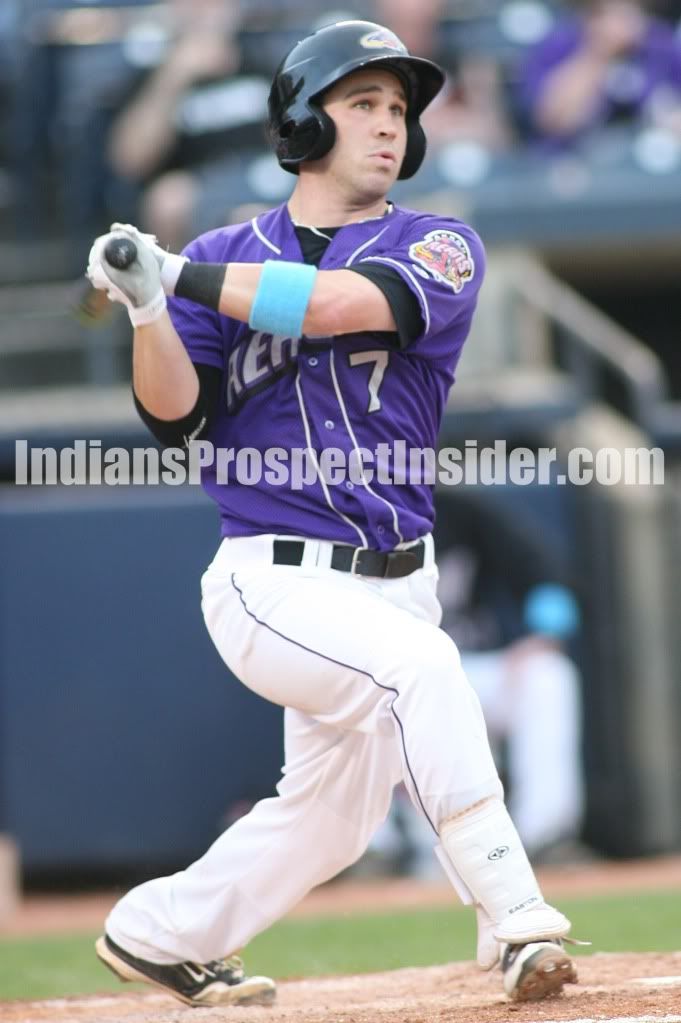 |
| (Photo: Tony Lastoria) |
Strengths: Kipnis is an advanced, athletic hitter who has a lot of ability at the plate and stuffs a stat sheet. He has very good bat-to-ball ability, works counts well, can hit with two strikes, gets on base at a good clip, and does not strikeout a lot. He has a polished approach at the plate with a discerning eye that packs a powerful punch in his small frame. He hits the ball where it is pitched, stays on the ball well, and shows good power to all fields. He power comes from some very strong wrists and forearms which help generate excellent bat speed to whip the bat through the hitting zone, but also because he shows a knack for squaring up the ball and the ball just jumps off his bat to all fields. He is not giving at all to left-handers and has an ease to his game with a nice compact, fluid swing. He has an advanced feel for wood bats and has transitioned well to them because he used them a lot in high school tournaments and in college summer leagues. He only has average speed, but has good instincts on the bases and can steal a base. He is an intense competitor who plays the game with passion, goes all out, has exceptional work ethic, and is fun to watch. He has a chance to hit for average with 15-20 home runs a year at the major league level, and has often been compared as having the offensive potential of former Texas Rangers outfielder Rusty Greer.
The Indians left Kipnis in the outfield for his professional debut in Mahoning Valley, but after that season they experimented with a position change to second base in Instructional League. His performance at second base during the instructional period earned him rave reviews not only by the Indians, but from several scouts from other teams as well, and after the impressive performance it was full steam ahead with a permanent move to second base. He has the athleticism and ability to be a solid average defensive outfielder because he has good instincts and gets good jumps on balls, but the move was made because his bat and abilities at second base play up and increase his value tremendously.
Prior to the move Kipnis already had some experience in the infield as he played second base in high school and originally enrolled at the University of Kentucky as a shortstop. Since the move the Indians have been amazed with how quickly he has transitioned to second base and how natural he looks there. He immediately has taken to groundballs well showing good lateral movement, very good instincts, and smooth actions in the field. He makes ranging plays look easy because of his first step quickness, incredible athleticism, and tons of confidence in his abilities. He handles the pivot on the double play well with good footwork, hands, and a sound comfort level. His throwing arm is a tick below average, easily the weakest tool in his arsenal, but is not an issue at second base. Most importantly he likes playing second base and was 100% on board with the position switch, which always helps from a mental aspect when making a change. He played some third base in the AFL, but that was mainly to give him at bats and not as an experiment to move him here in the future. He is already considered an average defender at the position, and the feeling is that he has the ability to grow and become an above average major league quality defender.
Even though Kipnis was making a transition to a new defensive position last year, he put forth an outstanding offensive season. Most players often suffer offensively when they are concentrating so much on a position change, but he really handled himself well from a mental standpoint where all the focus at second base and three promotions to higher levels did not affect his performance at the plate. In fact, his performance improved with each promotion that he had over the course of the season. After hitting .300/.387/.478 with High-A Kinston in 54 games, he was promoted to Double-A Akron and even though a majority of his games were in the cavernous Canal Park he still hit .311/.385/.502 in 79 games. He was a late season addition to the Triple-A Columbus roster during the playoffs and in five postseason games hit .455/.500/.1.045 and hit for the cycle in the International League championship clincher. He proved he can hit at any level and that pressure does not faze him, and he excelled in his transition to a full time second baseman.
A lot of Kipnis’ success at the plate last year was the result of him being in a good rhythm and using his very good, strong hands where he could let it air out when he swings but still keep the bat under good control. He had a real loopy swing his last year in college, so last spring he and the Indians really focused on getting him to come down on the ball, being shorter to the ball, and hitting the ball up the middle. He also worked out hard in the offseason to come into the season about ten pounds stronger and started using a bigger, heavier bat. As a result, with the shortened up swing along with his increased strength and a bigger bat it gave him a little extra thump when he made contact. Overall, his success at second base and the way he settled into the position really impressed the Indians as he far surpassed where they thought he would be with his development at second base.
Opportunities: The bat has never been a question for Kipnis as it has always been where he would fit on the diamond from a position standpoint. The problem coming out of college was his lack of size and a true defensive position, but the move to second base appears to have removed those two issues. He just needs more repetition and experience at second base to continue to become more comfortable there and increase his confidence, especially on the hard shots right at him. He needs to pick up the nuances of the position such as with his pre-pitch positioning on certain pitches and with his positioning on cut offs and relay throws from the outfield. The arm action on his double play pivot still needs more work to get a more consistent slot with his throw, and he needs more experience handling bunting situations. He also needs to continue to refine and develop his feel at second base and become more instinctual with his hands and movement. He has a below average arm, but the move to second base makes that not a concern. At the plate his swing at times can get loopy, so he needs to be more consistent with maintaining his swing by keeping his hands in front of his head to provide a shorter path to the ball. He has a minor uppercut in his swing that he and the Indians have worked on leveling out.
Outlook: The transition to professional baseball is not easy, and teams are unsuccessful quite often with getting their higher level prospects to the major leagues. Kipnis so far has been the exception to that rule as he had an outstanding year last season both from a statistical and developmental perspective, and hopefully it is just the start to a very successful pro career that continues at the big league level. The Indians can certainly use his potent bat in their big league lineup, and hopefully it translates and does not disappoint like so many others have recently. He made extraordinary strides at second base last year and in the process has gone from being just an ordinary big league outfield prospect to now an All Star caliber prospect at second base. He and Dustin Ackley of the Seattle Mariners are the top two second base prospects in baseball and have a chance to be battling it out for All Star votes at the major league level for many years. After producing at the three highest levels of the minors, he is considered the future heir to the throne at second base in Cleveland, and may get an opportunity there at some point this coming season. Due to the presence of a lot of other options at the position and roster management reasons, the Indians may opt to be conservative with promoting him to the big leagues this year and opt to take advantage of the time allowed to finish him off defensively at second base so he is ready to be the everyday second baseman in 2012. He will open the 2011 season at Columbus.
| Year | Age | Team | Lvl | G | AB | R | H | 2B | 3B | HR | RBI | BB | SO | SB | AVG | OBP | SLG | OPS |
| 2009 | 22 | Mahoning Valley | A- | 29 | 111 | 19 | 34 | 8 | 3 | 1 | 19 | 15 | 18 | 3 | .306 | .388 | .459 | .847 |
| 2010 | 23 | Kinston | A+ | 54 | 203 | 33 | 61 | 12 | 3 | 6 | 31 | 24 | 46 | 2 | .300 | .387 | .478 | .865 |
| 2010 | 23 | Akron | AA | 79 | 315 | 63 | 98 | 20 | 5 | 10 | 43 | 31 | 61 | 7 | .311 | .385 | .502 | .887 |
| MiLB Totals | 162 | 629 | 115 | 193 | 40 | 11 | 17 | 93 | 70 | 125 | 12 | .307 | .386 | .486 | .873 |
Follow Tony and the Indians Prospect Insider on Twitter @TonyIPI. Also, his latest book the 2011 Cleveland Indians Top 100 Prospects & More is available for purchase for $20.95 to customers in the US (shipping and handling extra).










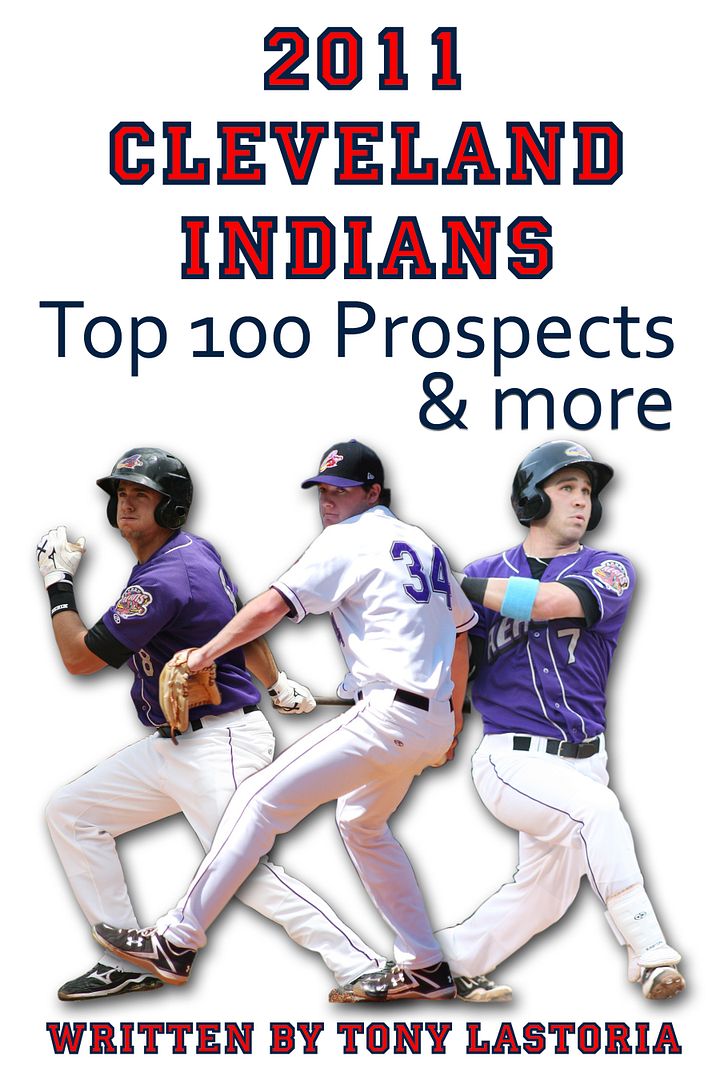
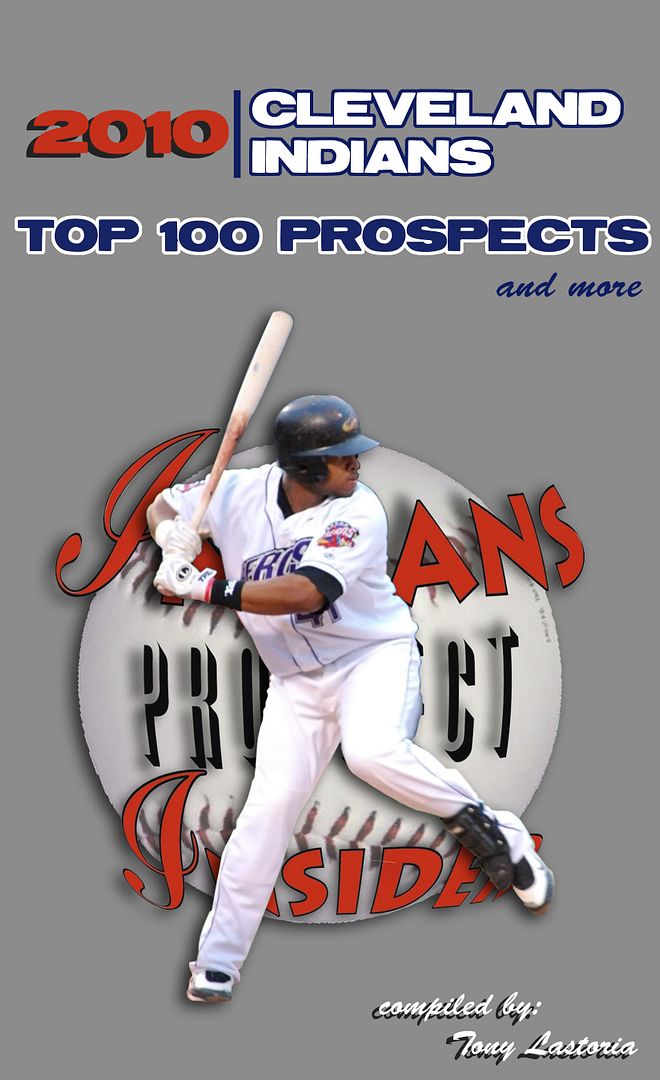
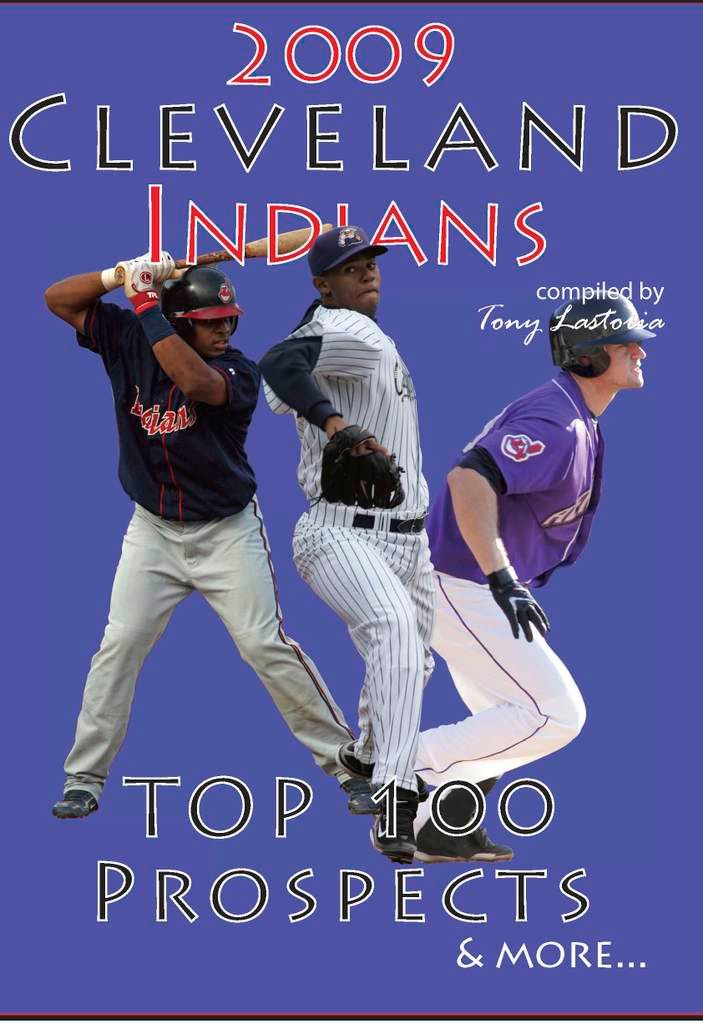
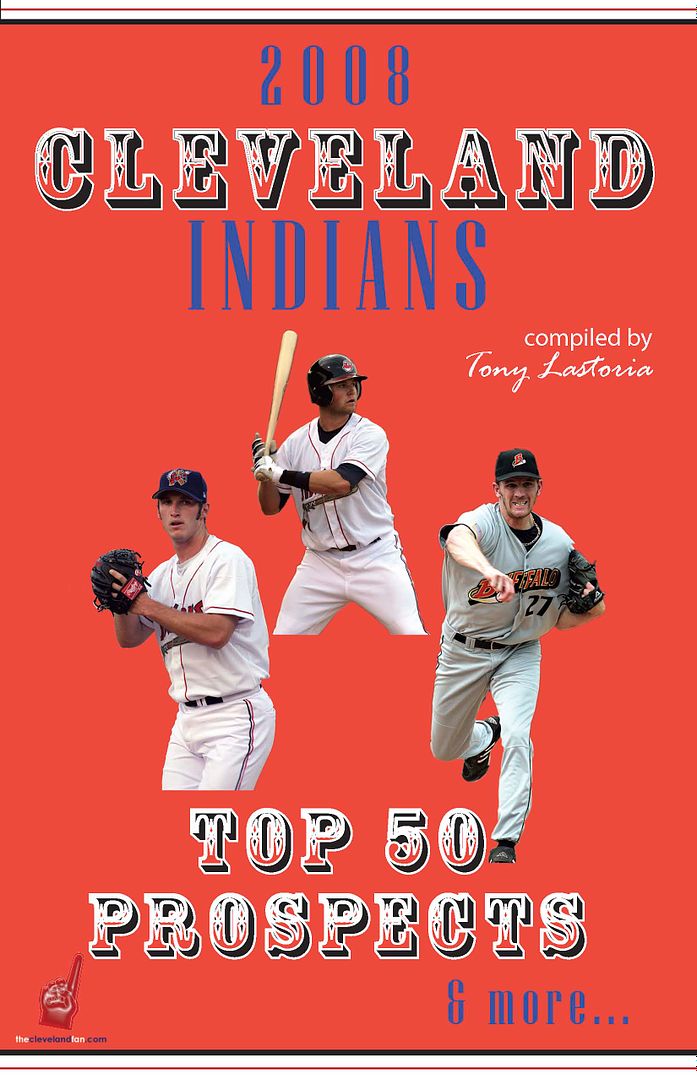
 Everything on this site is free, but for those interested in making any monetary contributions to help support the stability and growth of this site please click on the "Donate" button below.
Everything on this site is free, but for those interested in making any monetary contributions to help support the stability and growth of this site please click on the "Donate" button below.


0 comments:
Post a Comment